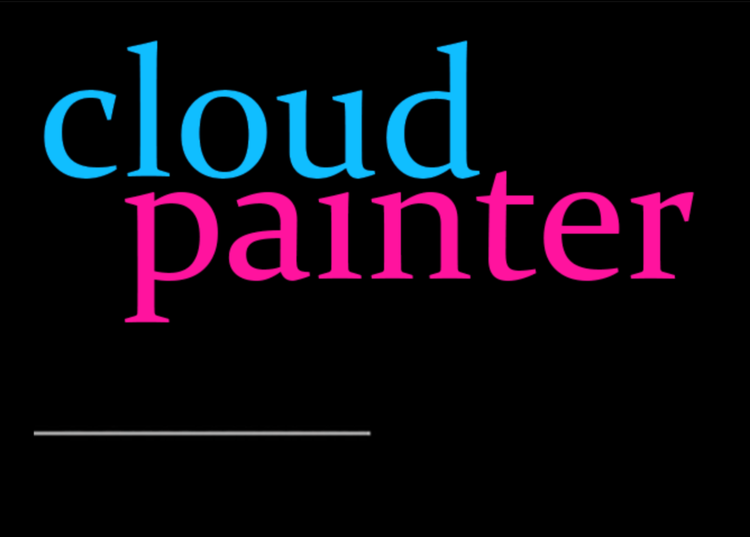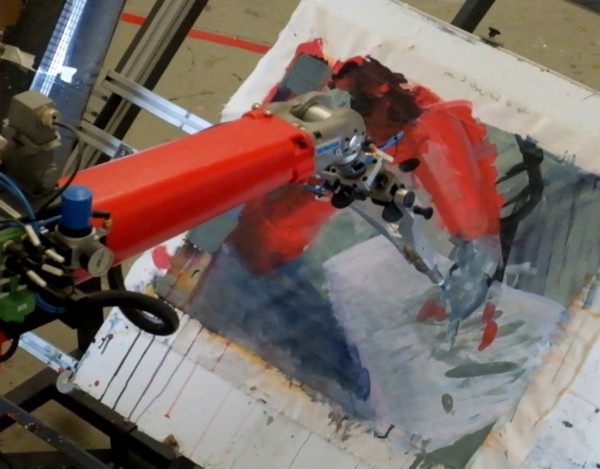For each of the past three years, internet entrepreneur Andrew Conru has sponsored a $100,000 international competition to build artistic robots called RobotArt.org. His challenge was to create beautiful paintings with machines and the only steadfast rule was that the robot had to use a brush... no inkjet printers allowed.
I have participated in each, and this year I was fortunate enough to be awarded the top prize. Here are three of the paintings I submitted. The first two pictured are AI generated portraits made with varying degrees of abstraction. The third is an AI generated study of a Cezanne masterpiece.
Second Place went to Evolutionary AI Visionary Hod Lipson, and third went to a team from Kasetsart University in Thailand.
Since the contest began more than 600 robotic paintings have been submitted for consideration by artist, teams, and Universities around the world including notable robots eDavid, A Roboto, TAIDA, and NORAA. The form of the machines themselves have included robot arms, xy-tables, drones, and even a dancing snake. The works were half performance and half end product. How and why the robots were painting was as an important part of the judging as what the paintings looked like. Videos of each robot in action were a popular attraction of the contest.
2016 Winner TAIDA painting Einstein
The style of the paintings was as varied as the robots. These five paintings from the 2018 competition show some of the variety. From left to right, these are the work of Canadian Artist Joanne Hastie, Japanese A Roboto, Columbia's Hod Lipson, Californian Team HHS, and Australian Artist Robert Todonai.
Like all things technology related recently, the contest also saw an increase in the amount of AI used by the robots each year.
In the first year only a couple of teams used AI including e-David and myself. In the self portrait on the left, e-David used feedback loops to watch what it was painting and make adjustments accordingly, refining the painting by reducing error one brush stroke at a time.
While AI was unusual when the contest began, it has since become one of the most important tools for the robots. Many of the top entries, including mine, Hod Lipson's, and A Roboto used deep learning to create increasingly autonomous generative art systems. For some of the work it became unclear whether the system was simply being generative, or whether the robots were in fact achieving creativity.
This has been one of my favorite projects to work on in recent years. Couldn't be happier than to have won it this year. If you are interested in seeing higher resolution images of my submissions as well as three that are for sale, you can see more in my CryptoArt gallery at superrare.co.




